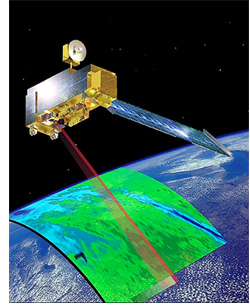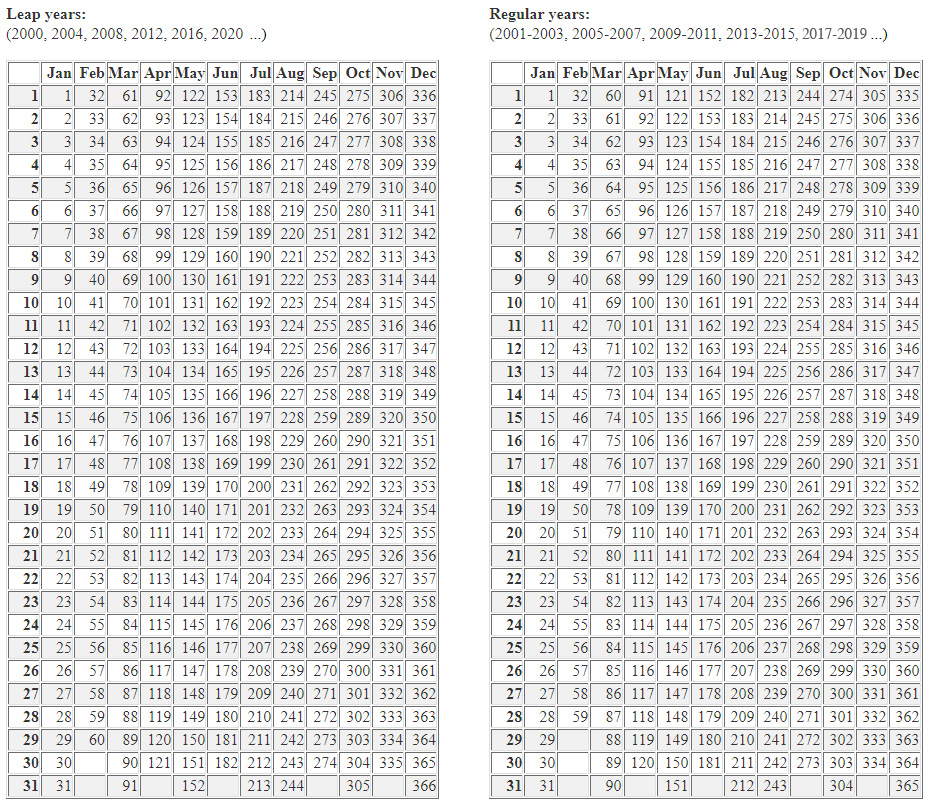Links to Related Websites
Terra and Aqua Platforms (Satellites) carrying the MODIS Instruments
 Approximately the size of a small school bus, both the Terra (originally known as EOS AM-1) and Aqua (originally known as EOS PM-1) satellites or platforms carry instruments that take coincident measurements of the Earth. MODIS (or Moderate Resolution Imaging Spectroradiometer) is a key (flagship) instrument aboard the Terra and Aqua satellites. Terra's orbit around the Earth is timed so that it passes from north to south across the equator (descending node) in the morning, while Aqua passes south to north over the equator (ascending node) in the afternoon. Both satellites are in a circular sun-synchronous polar orbit that navigates the daylight (sunlit) side of the Earth approximately every 99 minutes. Terra MODIS and Aqua MODIS are viewing the entire Earth's surface every 1 to 2 days, acquiring data in 36 spectral bands, or groups of wavelengths. These data will improve our understanding of global dynamics and processes occurring on the land, in the oceans, and in the atmosphere. MODIS is playing a vital role in the development of validated, global, interactive Earth system models able to predict global change accurately enough to assist policy makers in making sound decisions concerning our environment.
Approximately the size of a small school bus, both the Terra (originally known as EOS AM-1) and Aqua (originally known as EOS PM-1) satellites or platforms carry instruments that take coincident measurements of the Earth. MODIS (or Moderate Resolution Imaging Spectroradiometer) is a key (flagship) instrument aboard the Terra and Aqua satellites. Terra's orbit around the Earth is timed so that it passes from north to south across the equator (descending node) in the morning, while Aqua passes south to north over the equator (ascending node) in the afternoon. Both satellites are in a circular sun-synchronous polar orbit that navigates the daylight (sunlit) side of the Earth approximately every 99 minutes. Terra MODIS and Aqua MODIS are viewing the entire Earth's surface every 1 to 2 days, acquiring data in 36 spectral bands, or groups of wavelengths. These data will improve our understanding of global dynamics and processes occurring on the land, in the oceans, and in the atmosphere. MODIS is playing a vital role in the development of validated, global, interactive Earth system models able to predict global change accurately enough to assist policy makers in making sound decisions concerning our environment.
Terra and Aqua Maneuvers
Terra and Aqua Orbit Tracks
Terra Spacecraft Specifications
Launch Date: 18 December 1999
First Day of MODIS Data: 25 February 2000
Instruments: MODIS, CERES, ASTER, MISR, MOPITT
Equatorial Crossing: 10:30 a.m. Descending Node
Altitude: 705 kilometers (438 miles) above Earth
Orbit: Sun Synchronous, Near Polar Orbit
Period: 98.8 minutes (16 orbits per day)
Aqua Spacecraft Specifications
Launch Date: 4 May 2002
First Day of MODIS Data: 25 June 2002
Instruments: MODIS, CERES, AIRS, AMSR-E, AMSU-A, HSB
Equatorial Crossing: 1:30 p.m. Ascending Node
Altitude: 705 kilometers (438 miles) above Earth
Orbit: Sun Synchronous, Near Polar Orbit
Period: 98.8 minutes (16 orbits per day)
Day of Year Calendar (useful for converting 'day of year' in the HDF filenames to month & day)


